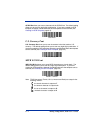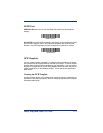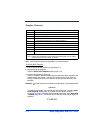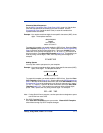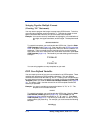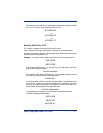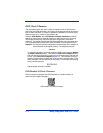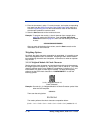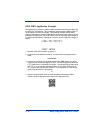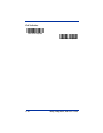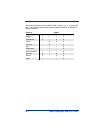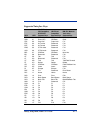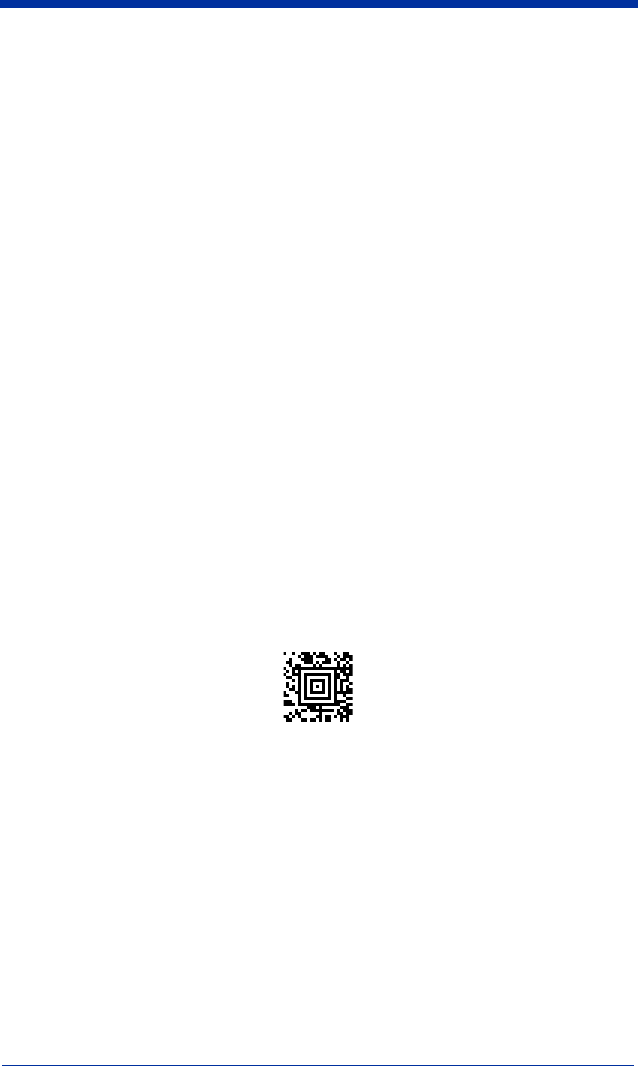
9 - 10 4600rp, 4600g/4600r, 4800i User’s Guide
2. Enter the characters in order. For each character, look up the corresponding
hex value from the ASCII Conversion Chart (Code Page 1252), page A-4.
Use the Programming Chart on the inside the back cover of this manual to
scan the two symbols for each hex value.
3. Scan the Save barcode on the inside back cover.
Example: To program the modulo 11 check character from example #8 on
page 9-9, enable the OCR-A font. Scan the Enter OCR Check
Character barcode on page 9-9, then scan the following hex values
in order:
3031323334353637383958
After you enter all the desired hex values, scan the Save barcode on the
inside back cover of this manual.
Weighting Options
By default, the check character computation is unweighted. It is possible to use
one of two weighted modulo 10 schemes. Weighting is often used to detect if
two neighboring characters are transposed, a common error when an operator
keys in data.
3-1-3-1 Weighted Modulo 10 Check Character
Starting with the check character and working backward through the message,
the imager applies a multiplier of 1, then 3, then 1, then 3, and so on. This is the
checking scheme used in many EAN•UCC symbologies, including U.P.C. and
Interleaved 2 of 5 (when a check digit is invoked). To apply this weighting
scheme, set the OCR check character to “0123456789x3x1” or scan the
following symbol:
Example: Scan the 3-1-3-1 Weighted Modulo 10 Check Character symbol. Also
enter the OCR template:
dddddddc
Then scan the string below:
01234565
The reader performs the check character computation below:
(0 x 3 + 1 x 1 + 2 x 3 + 3 x 1 + 4 x 3 + 5 x 1 + 6 x 3 + 5 x 1) modulo 10 = 0
3-1-3-1 Weighted Modulo 10
Check Character



